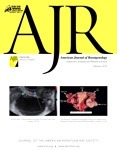Medical Center Reduces CT Scans, Radiation Exposure Through Educational Intervention
by
Astrid Fiano, DOTmed News Writer | January 25, 2010

Important findings on
CT dose reduction
The American Roentgen Ray Society (ARRS) has announced the intriguing results of a study on reducing CT scans and patient radiation in a large medical center. The study is published in the February issue of the American Journal of Roentgenology. ARRS is the oldest radiology society in the U.S.
According to the study, entitled "Success of a Safe and Simple Algorithm to Reduce Use of CT Pulmonary Angiography in the Emergency Department," the study found that physicians' practice patterns changed in response to educational intervention. The changes in patterns resulted in a reduction in radiation exposure to emergency department patients with suspected pulmonary embolism (PE) without compromising patient safety. The authors note that there has been a good deal of recent attention regarding exposure of radiation in diagnostic radiology.
Since CT pulmonary angiography (CTPA) has become more available, the use of this method has been increasing as ventilation-perfusion (V/Q) scanning has decreased. CTPA has a total effective radiation dose approximately five times greater than that from V/Q scanning, which the authors state many physicians do not know. The study sought to safely increase the use of V/Q scanning and decrease the use of CTPA through an educational intervention.
The intervention took the form of two, hour-long educational seminars with available ER staff (residents, attending physicians) at Montefiore Medical Center in the Bronx, NY. The collaborative seminars took place in late 2006/early 2007. The information provided included radiation doses and accuracy of V/Q scanning and CRPA. The seminars offered recommendations to ER clinicians that patients with suspicion of PE should first have a chest radiograph. If the radiograph is normal, a V/Q scan would be appropriate; otherwise CTPA could then be utilized.
The study showed that prior to the educational intervention, 1,979 imaging examinations were performed from the ER in patients with suspected PE; of those, 1,234 were CTPA, and 745 were V/Q. Subsequent to the intervention, out of 2,136 imaging examinations, 920 were CTPA and 1,216 were V/Q. The first quarter of the year following the inventions showed immediate decline of CTPA to 49.8 percent of examinations, down from over 60 percent in the previous year. The percentage declined in the final quarter to 39.4 percent.
"We have shown that a simple, collaborative educational intervention and routing of patients to CTPA or V/Q scanning based on the results of chest radiography can change the practice pattern in the emergency department for patients with suspected PE. The use of V/Q scanning in patients with normal chest radiographs results in considerably lower patient radiation exposure," said Linda B. Haramati, M.D., M.S., lead author of the study.
Adapted in part from an ARRS press release.
http://www.arrs.org/Pressroom/info.cfm?prID=448
